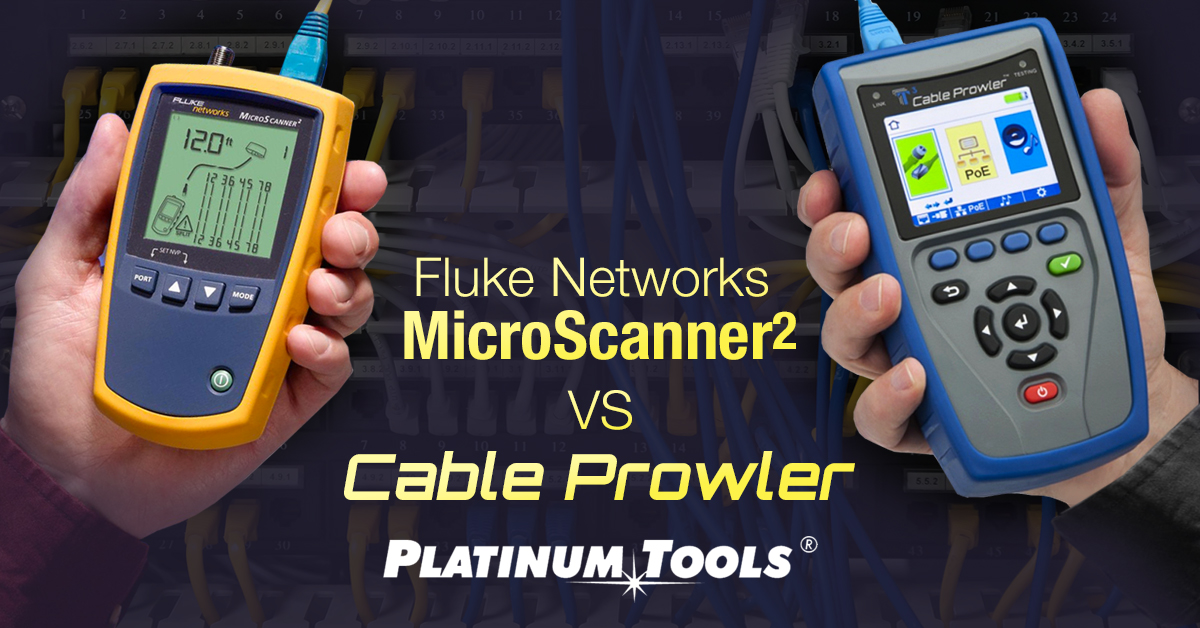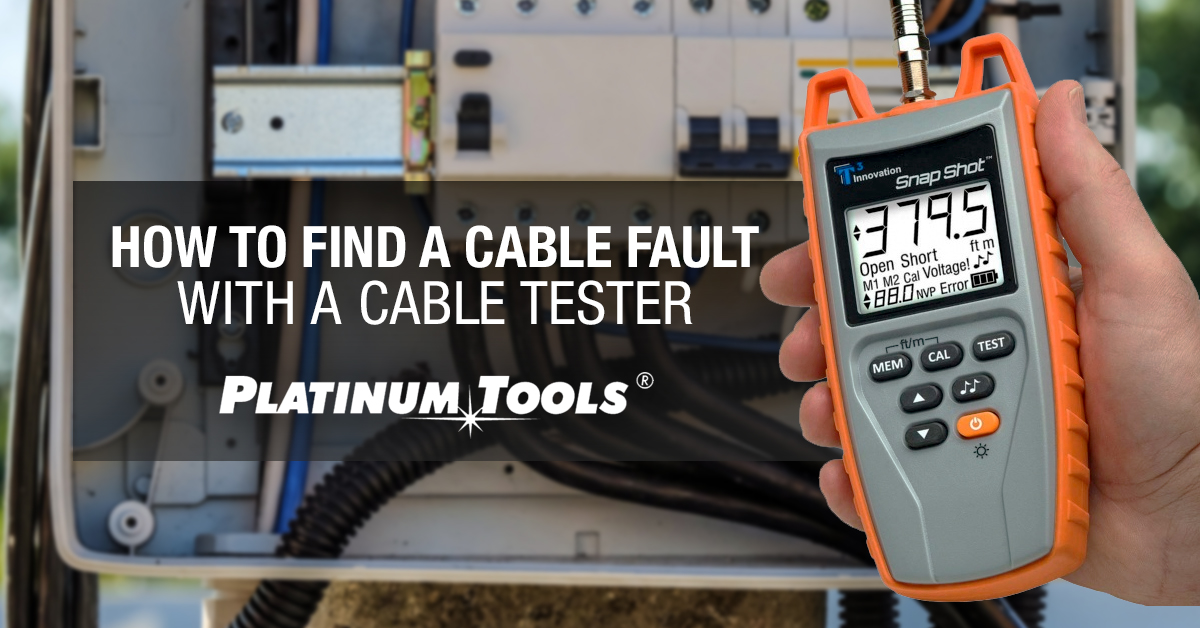
If your network cable tester is important to you and your daily work, it needs to be the best — not just the best overall, but the best one for you. Looking at the Fluke Networks Microscanner2 and the Platinum Tools Cable Prowler, let’s put them to both tests. We’ll look at technical features and specs that show whether they’re up for the job, and design and usability details that show they can work hard and help you do your best.
Comparing Functionality
Both devices check cable lengths and proper wiring, ensuring that cable wiring installs are done right. When the network is powered up, the Microscanner2 can detect PoE. The Cable Prowler also steps in with PoE mode checking for both A/Endspan and B/Endspan to verify the pins in use for power – an important distinction. The Cable Prowler places a PoE load to make sure the switch can sustain PoE output when in use. The Platinum unit can also check link status and link capability, verifying that the cable is live. This extra detail can also help speed up troubleshooting.
| MicroScanner2 | Cable Prowler | |
| Active Ethernet (Link Capability & Link Status) | ✓ | ✓ |
| Detects PoE/PoE+, PoE Mode, and load test for voltage drop | Detect PoE only | ✓ |
| Link Light | ✓ | |
| Tone Generation | ✓ | ✓ |
| Detect Length to Opens & Shorts | ✓ | ✓ |
| Verifies Continuity (RJ45, Coax) | ✓ | ✓ |
| ID Remotes (ID only) Ntwk & Coax | Up to 20 | |
| Testing & ID Remotes Ntwk & Tel | Up to 7 | Up to 8 |
| Interface connection | RJ45/F conn | RJ45/F conn |
| Hanging Clip | Option | |
| Kickstand | Option | |
| Max Length 1,500 ft (457 m) | ✓ | ✓ |
| Screen type | No Color | Color |
| Save and export test results | up to 256 tests | |
| Battery: Rechargeable Lithium-ion | No (2xAA) | No (6xAA) |
| Languages | EN | En, FR, ESP, DEU, ITA |
Testing and Recording
When verifying large wiring jobs, rapid recording of the testing results is a big plus. If there are problems, it helps locate them quickly. For signoff, it provides reliable documentation of system checkout. Microscanner2 simply displays the current test results; the Cable Prowler stores up to 256 test results for export and easy inclusion in reports and analysis runs.
Easy to Read and Interpret
Cable testing takes place throughout the world, and in all sorts of conditions. Even in North America, workers speak many languages. The Microscanner2 only uses English and presents results on a monochrome display. Cable Prowler is fluent in English, French, Spanish, German and Italian, and uses a full-color display which speeds the interpretation of results in all kinds of lighting conditions. In some cases, color is enough to quickly determine preliminary results!
Features to Make It Handy
Cable Prowler adds further usability features: an optional hanging clip attachment, much like a lineman’s handset, keeps it handy and out of the way. A kickstand attachment keeps it visible standing on a flat surface, allowing hands-free testing. Microscanner2 does not currently offer these basic items. Cable Prowler also allows firmware upgrades to enhance the value of the unit over time, adding features and display formats, and supporting future standards as needed.
In Conclusion
An added plus for many purchasers is the fact that Platinum Cable Prowler is made entirely in the U.S.A., following strict manufacturing standards. While the two units appear to be comparable in their basic purpose, it seems clear that the Cable Prowler is the one technicians would rather have with them in the field. Superior design, thoughtful usability features, and an eye towards future standards combine to make it clearly the better tool for cable testing and troubleshooting in today’s fast-paced network environment.




 Big-picture folks are running the numbers on power, cooling, and computation, envisioning the datacenter of the future. Meanwhile your network, miles and miles of cable, keeps it all tied together and connected to the real world. Reality is a big factor, and keeps you maintaining cable runs long after they’re installed. Network cabling is a part of the infrastructure that only becomes visible when it fails — or when you bring it down for testing and tracing.
Big-picture folks are running the numbers on power, cooling, and computation, envisioning the datacenter of the future. Meanwhile your network, miles and miles of cable, keeps it all tied together and connected to the real world. Reality is a big factor, and keeps you maintaining cable runs long after they’re installed. Network cabling is a part of the infrastructure that only becomes visible when it fails — or when you bring it down for testing and tracing.








